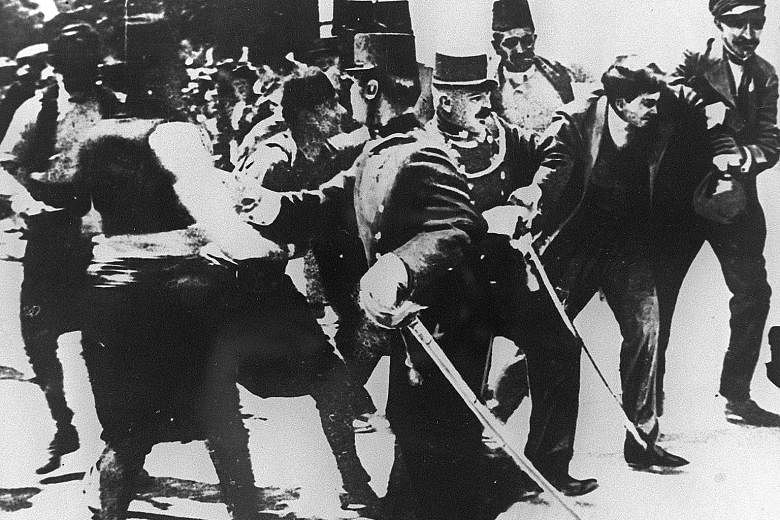PARIS • A century after World War I ended, the world lives with the consequences of a peace accord that redrew the map of Europe, carved up vanquished empires and created as many future conflicts as new countries and borders from the Baltic states to Turkey, via Czechoslovakia and Yugoslavia.
DIVISION OF EUROPE AND THE COLD WAR
World War I served as an incubator for the 1917 Russian Revolution. Against a backdrop of desperate food shortages, military failure left the Tsarist state crippled and vulnerable to an assault by Lenin's Bolsheviks, who then established the Soviet Union as an authoritarian communist state.
Disastrous agricultural policies led to more than three million people dying in the famine of the early 1930s, and millions more under the Great Terror unleashed by Lenin's successor, Joseph Stalin.
By the mid-1930s, conditions were in place for the post-World War II division of Europe.
That in turn produced the Cold War and its associated splitting of the rest of the planet into Western and Soviet spheres of influence, and an unstable global equilibrium that helped fuel countless conflicts across the developing world. The United States would become the Western camp's main economic, military and political power.
MIDDLE EAST OVERHAUL
By encouraging an Arab revolt, Britain helped precipitate the collapse of the Germany-allied Ottoman empire. A secular Turkey emerged and Britain and France assumed post-war control of much of the Arab world.
By then, Britain had also made clear, through the 1917 Balfour Declaration, its support for the principle of a Jewish state on land it had pledged to the Arabs.
The Ottoman empire's collapse also resulted in the killing of up to 1.5 million Armenians.
A NEW SOCIAL ORDER
A fear of upheaval helped accelerate reforms while also inspiring other revolutionaries, including the nascent fascist movement that was soon to seize power in Italy.
Waves of militancy delivered major advances in terms of working conditions. Women "earned" the right to vote through their participation in war-related activities.
Less obvious positive legacies of a war which left millions maimed or traumatised were greater social acceptance of the disabled and the destigmatisation of mental illness.
Poetry was revived as an art form; Dadaism, the avant-garde art movement, was born; and jazz became the soundtrack for the escapism and innovation of the "roaring '20s".
AGENCE FRANCE-PRESSE

